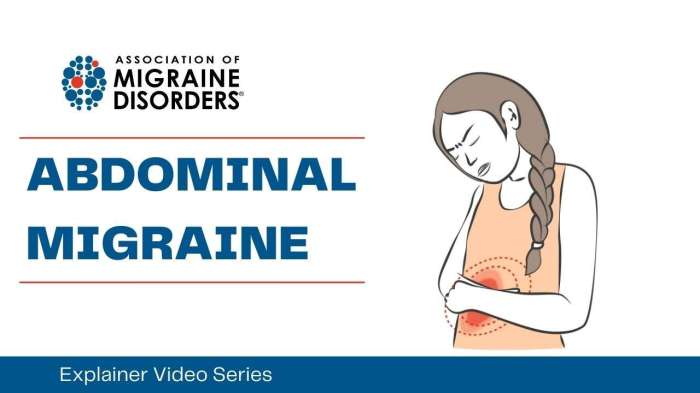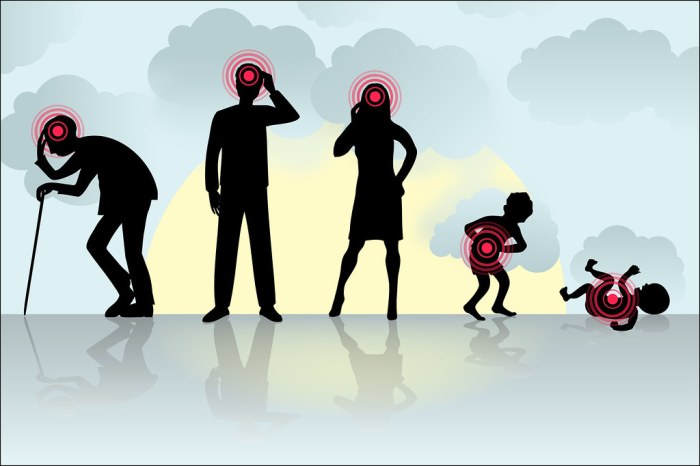Auditory processing disorder in adults presents unique challenges, impacting communication, social interactions, and daily life. This comprehensive guide delves into the intricacies of APD in adults, exploring its characteristics, diagnostic processes, and the multifaceted impact it has on various aspects of life. We’ll cover everything from underlying causes to effective management strategies and support systems.
This disorder, often misunderstood, can manifest in various ways. Symptoms can range from difficulty following conversations in noisy environments to challenges with understanding specific sounds or words. It’s crucial to recognize the subtle signs and learn about the available support for adults affected by APD.
Introduction to Auditory Processing Disorder in Adults
Auditory processing disorder (APD) in adults is a condition that affects how the brain processes sounds. It’s not a hearing loss, but rather a difficulty in understanding the meaning of sounds, even if the person can hear them clearly. This can manifest in various ways, impacting communication, learning, and daily life. Understanding the characteristics and diagnostic process of APD is crucial for early intervention and effective management.Adults with APD may experience challenges that extend beyond simple difficulty with hearing in noisy environments.
The core issue lies in the brain’s ability to interpret and organize the auditory information it receives. This often leads to difficulties with tasks that require auditory processing skills, such as following conversations, distinguishing sounds, and remembering what was said.
Common Characteristics and Symptoms of APD in Adults
Understanding the specific symptoms of APD is key to recognizing the condition. Symptoms often overlap with other conditions, making diagnosis crucial. It’s essential to distinguish APD from other auditory or cognitive impairments.
- Difficulty understanding speech in noisy environments. This is a hallmark symptom, often leading to requests for repetition or clarification. Individuals might struggle to follow conversations in crowded places or during group discussions.
- Problems with sound localization. This means having trouble determining the source of a sound. For instance, someone with APD might have difficulty pinpointing where a car horn is coming from.
- Difficulties with auditory memory. This refers to the ability to retain and recall information heard. For example, someone with APD might have trouble remembering instructions given verbally or following multi-step directions.
- Difficulties with auditory discrimination. This involves distinguishing subtle differences between sounds. A common example is struggling to differentiate between similar-sounding words, like “ship” and “sheep.”
- Challenges with following complex instructions. This could manifest as difficulty following a series of instructions or instructions involving multiple steps.
- Difficulty with sound sequencing or blending sounds. This could lead to difficulties with tasks requiring understanding of the order of sounds or processing multiple sounds simultaneously.
Diagnostic Process for APD in Adults
Diagnosing APD requires a comprehensive assessment, which should include a range of tests designed to evaluate various aspects of auditory processing.
- Audiological Testing. This involves a series of tests to assess hearing sensitivity, ensuring that any hearing loss is identified and excluded as the primary cause of difficulties.
- Behavioral Tests. These tests focus on the individual’s ability to process auditory information. Examples include speech-in-noise tests, dichotic listening tests, and tests that assess the processing of complex auditory patterns.
- Central Auditory Processing Tests. These tests specifically evaluate how the brain processes sounds. Tests such as the auditory figure-ground test or the auditory memory test measure the brain’s ability to separate relevant sounds from background noise and remember what was heard.
Comparison with Other Conditions
Distinguishing APD from other hearing or cognitive conditions is vital for accurate diagnosis and appropriate intervention.
| Condition | Key Characteristics | Distinguishing Features |
|---|---|---|
| Auditory Processing Disorder (APD) | Difficulty processing auditory information, even with normal hearing. | Focuses on the brain’s interpretation of sounds, not the hearing mechanism itself. |
| Hearing Loss | Impaired ability to perceive sounds due to damage to the ear. | APD is a cognitive processing issue, whereas hearing loss involves a physical impairment. |
| Attention Deficit/Hyperactivity Disorder (ADHD) | Problems with attention, impulsivity, and hyperactivity. | APD focuses specifically on auditory processing difficulties, while ADHD affects a broader range of cognitive functions. |
| Learning Disabilities | Specific difficulties in acquiring and using academic skills. | APD can be a contributing factor to learning difficulties, but they are distinct conditions. |
Impact on Daily Life
Adult Auditory Processing Disorder (APD) significantly impacts various facets of daily life, often going unnoticed or misdiagnosed. The challenges extend beyond simple hearing difficulties, encompassing complexities in processing and interpreting auditory information. This can lead to frustration, social isolation, and diminished academic or professional success. Understanding these impacts is crucial for providing effective support and interventions.Adults with APD frequently experience difficulties in understanding and responding to spoken language, even in quiet environments.
This can create barriers in social situations, academic settings, and professional environments. The challenges are often subtle and can be misinterpreted, leading to feelings of inadequacy or misunderstanding. Real-world scenarios reveal a broad spectrum of difficulties, highlighting the importance of tailored support strategies.
Communication Challenges
Effective communication is essential for navigating daily life. Adults with APD may struggle to follow conversations, especially in noisy environments or when multiple people are speaking simultaneously. They may misinterpret or miss parts of conversations, leading to misunderstandings and frustration for themselves and others. This can affect their ability to participate fully in social interactions and professional settings.
Social Interaction Difficulties
Social situations can be particularly challenging for adults with APD. The constant barrage of auditory information, combined with the need to process and respond appropriately, can be overwhelming. They may have difficulty understanding subtle social cues, leading to awkward or misinterpreted interactions. This can result in feelings of social isolation and difficulty forming and maintaining relationships.
Academic and Professional Performance
The impact of APD extends to academic and professional environments. Adults with APD may struggle with lectures, presentations, or meetings. They may experience difficulty taking notes, following instructions, or participating in discussions. This can significantly affect their academic performance and professional advancement.
Figuring out if you have an auditory processing disorder (APD) can be tricky, and it’s a whole other ballgame for adults. While dealing with the complexities of APD, it’s important to consider your reproductive health, too. For instance, if you have PCOS and are wondering about freezing your eggs, a great resource is should i freeze my eggs if i have pcos.
Ultimately, both reproductive health choices and understanding APD are crucial for navigating life’s challenges as an adult.
Workplace Challenges
In a professional setting, adults with APD may experience difficulties with phone calls, meetings, or understanding complex instructions. They may struggle to filter out background noise, making it hard to focus on tasks. This can lead to errors, missed deadlines, and potential conflicts with colleagues or supervisors. These challenges can affect job satisfaction and career progression.
Adult auditory processing disorder can manifest in various ways, impacting daily life significantly. Sometimes, these challenges can be intertwined with other health concerns, such as a positive herpes IGG test result, which indicates a past or present infection with the herpes simplex virus. Understanding what a positive herpes IGG test means what does a positive herpes igg test mean can help unravel potential connections, and this information can be helpful in better understanding the complexities of auditory processing disorder in adults.
Social Gathering Challenges
Social gatherings, with their mix of conversations and background noise, can be highly problematic. An adult with APD might feel overwhelmed and struggle to follow conversations or contribute meaningfully. They might also experience difficulty understanding social cues, leading to misunderstandings and awkward interactions with others.
Improving Communication in Social Situations
Strategies for improving communication in social situations are crucial for adults with APD. These strategies may include:
- Prioritizing one-on-one conversations: Reducing the auditory overload by focusing on smaller group interactions can make it easier to follow and understand conversations. This may involve seeking out opportunities for one-on-one interactions whenever possible.
- Using visual aids and written materials: Supplementing spoken instructions with visual cues or written materials can aid understanding and reduce the strain on auditory processing. For instance, providing a written summary of meeting agendas or instructions can prove helpful.
- Requesting clarification and repetition: Adults with APD should feel empowered to ask for clarification or repetition of information, rather than feeling embarrassed or inadequate about their processing difficulties. This demonstrates clear communication needs and fosters a supportive environment.
- Utilizing assistive technologies: Assistive technologies, such as noise-canceling headphones or captioning devices, can minimize distractions and improve understanding, thereby enhancing communication effectiveness.
Specific Daily Activities and Challenges
| Daily Activity | Potential Challenges for an Adult with APD |
|---|---|
| Following conversations in noisy environments | Difficulty distinguishing individual voices from background noise, leading to missed information and misunderstandings. |
| Participating in meetings | Difficulty understanding instructions, following discussions, or contributing effectively due to auditory processing difficulties. |
| Attending social gatherings | Overwhelm due to a multitude of conversations and background noises, resulting in difficulty focusing and engaging in social interactions. |
| Using public transportation | Difficulty understanding announcements or following directions due to auditory processing challenges and background noises. |
| Watching television or movies | Difficulty understanding dialogue, particularly when multiple characters are speaking simultaneously, requiring more effort and concentration. |
Underlying Causes and Risk Factors

Understanding the root causes of auditory processing disorder (APD) in adults is crucial for effective diagnosis and intervention. While a definitive cause isn’t always pinpointed, various factors can contribute to the development or exacerbation of APD. This exploration delves into potential underlying mechanisms, highlighting the interplay of developmental influences, medical conditions, and brain injuries.The intricate interplay of genetic predisposition, environmental exposures, and past experiences can significantly impact an individual’s auditory processing abilities.
Identifying these factors can pave the way for personalized strategies to address APD effectively.
Potential Underlying Causes, Auditory processing disorder in adults
Numerous factors can contribute to the development of auditory processing disorder in adulthood. These range from early developmental experiences to later-life events. Understanding these diverse influences allows for a more comprehensive approach to diagnosis and treatment.
- Developmental Factors: Early childhood experiences play a crucial role in shaping auditory processing skills. Prenatal exposure to certain substances, complications during birth, or lack of appropriate stimulation during early childhood can potentially impact auditory processing abilities, persisting into adulthood. For example, a child who experienced significant hearing loss during their formative years might develop compensatory strategies that, while helpful, may still leave them susceptible to APD in adulthood.
- Medical Conditions: Certain medical conditions, such as chronic ear infections, neurological disorders, or specific learning disabilities, are associated with an increased risk of developing APD. These conditions can interfere with the brain’s ability to process auditory information, leading to symptoms of APD. For instance, individuals with multiple sclerosis may experience auditory processing challenges due to the neurological impact of the disease.
Adult auditory processing disorder can be tricky, making everyday sounds feel overwhelming. It’s like trying to focus on a conversation in a noisy room, constantly battling background distractions. Sometimes, similar to dealing with a frustrating zit, it can feel like a constant battle. That’s why understanding the potential risks of popping pimples, which can lead to scarring and infection, is important, as is the similar approach to managing the symptoms of auditory processing disorder.
Learn more about the potential dangers of popping pimples and how to best treat your skin at is popping pimples bad for my skin. Ultimately, addressing auditory processing disorder in adults requires a multifaceted approach that considers the underlying causes and symptoms.
- Brain Injury: Head trauma or other brain injuries, whether sustained in childhood or adulthood, can disrupt the neural pathways responsible for processing sound. This disruption can lead to difficulties in recognizing and interpreting auditory stimuli, potentially manifesting as APD. A traumatic brain injury (TBI) sustained during a sporting accident, for example, can impact the brain’s ability to process auditory information, resulting in symptoms of APD.
- Genetic Predisposition: Genetic factors can influence an individual’s susceptibility to auditory processing disorders. Research suggests that a family history of APD or related conditions may increase the risk of developing the disorder. This inherited vulnerability, in combination with environmental factors, can contribute to the development of APD.
Risk Factors Summary
The following table summarizes potential causes and risk factors associated with APD in adults. It highlights the complex interplay of factors that may contribute to the development or exacerbation of the disorder.
| Category | Potential Cause/Risk Factor | Example |
|---|---|---|
| Developmental Factors | Prenatal exposure to toxins, complications during birth, lack of auditory stimulation during childhood | Exposure to certain medications during pregnancy, premature birth, limited opportunities for language development. |
| Medical Conditions | Chronic ear infections, neurological disorders, learning disabilities | Recurring ear infections, attention deficit hyperactivity disorder (ADHD), specific language impairment. |
| Brain Injury | Head trauma, stroke, tumors | Concussion from a fall, traumatic brain injury (TBI), brain tumors. |
| Genetic Predisposition | Family history of APD or related conditions | Parents or siblings with APD or similar auditory processing difficulties. |
Management and Support Strategies
Navigating life with auditory processing disorder (APD) can be challenging, but effective management strategies can significantly improve quality of life for adults. These strategies encompass various treatment approaches, assistive technologies, and the crucial role of support systems. This section delves into practical techniques for coping with APD and maximizing independence.Understanding that APD is a complex condition with varied presentations, tailored management plans are essential.
A personalized approach, considering individual needs and strengths, is key to successful outcomes.
Treatment Options
Various treatment options are available for adults with APD, aiming to improve auditory processing skills and overall functioning. These approaches typically include:
- Auditory Training: This involves structured exercises designed to enhance the brain’s ability to process sounds. Specific exercises may focus on discriminating between similar sounds, recognizing sound patterns, and improving sound localization. These exercises are often tailored to individual needs and progress, and can be delivered in a clinical setting or through self-directed programs.
- Cognitive Remediation Therapy: This therapy targets the cognitive skills that support auditory processing, such as attention, memory, and problem-solving. By strengthening these supporting cognitive functions, the brain’s ability to manage auditory input can be improved.
- Speech-Language Therapy: This therapy focuses on enhancing auditory skills, improving communication, and developing strategies to compensate for processing difficulties. Strategies to improve comprehension, such as using visual aids or repeating information, can be crucial for success.
Role of Therapy and Interventions
Therapy plays a vital role in supporting adults with APD. It provides a structured environment for skill development and personalized strategies for managing daily challenges. Interventions are crucial to build coping mechanisms, including techniques to organize information, manage distractions, and improve communication effectiveness.
Assistive Listening Devices and Technological Aids
Assistive listening devices and technologies can significantly enhance the auditory experience for adults with APD. These tools can help manage background noise, improve sound clarity, and provide visual support for auditory information.
- Hearing Aids: If the underlying issue involves hearing loss, hearing aids can improve sound clarity and audibility. They can be instrumental in creating a better listening environment.
- FM Systems: These systems can help reduce background noise and improve the clarity of the speaker’s voice, making it easier to focus on the desired auditory input. They are particularly useful in classroom settings or during group discussions.
- Closed Captioning and Transcripting: These tools provide visual representations of spoken words, which can be very helpful in reducing auditory processing demands, especially in environments with high levels of background noise.
Importance of Support Systems
Support systems are essential for adults with APD. A strong network of family, friends, and support groups can provide emotional support, practical assistance, and a sense of community. Understanding and empathy from loved ones can help to manage the challenges of APD.
- Family and Friends: Open communication and understanding from family and friends can provide critical support and practical assistance in navigating daily life. Explaining the condition and its impact can foster empathy and understanding.
- Support Groups: Connecting with other adults who have APD can provide valuable insights, coping strategies, and a sense of community. Sharing experiences and learning from others can be a powerful resource.
Sample APD Management Plan for Adults
This is a sample plan, and specifics should be tailored to individual needs.
| Area | Strategies |
|---|---|
| Communication | Use visual aids, written notes, and clear, concise language. Consider using a communication board. |
| Environment | Minimize background noise, ensure good lighting, and organize spaces for optimal focus. Consider noise-canceling headphones. |
| Organization | Utilize calendars, planners, and to-do lists to manage tasks and appointments. |
| Stress Management | Implement relaxation techniques, such as deep breathing exercises, to manage stress. |
| Social Interactions | Engage in open communication with others about the condition and needs. Consider using a buddy system for support. |
Specific Challenges and Solutions

Navigating daily life with Auditory Processing Disorder (APD) can present unique hurdles, particularly in educational and professional settings. Understanding these challenges and the available solutions is crucial for fostering success and inclusion. This section delves into specific obstacles encountered by adults with APD and Artikels practical strategies to overcome them.
Challenges in Educational Settings
Adults with APD may have experienced difficulties in educational environments that weren’t properly addressed. These challenges can manifest in various ways, impacting their ability to learn and succeed. For instance, individuals with APD might struggle to follow lectures or participate actively in class discussions due to difficulties in distinguishing subtle auditory cues. Difficulties in comprehending complex information presented verbally, recalling details from spoken instructions, and concentrating in noisy environments are common.
- Classroom Accommodations: Strategies to support individuals with APD in a classroom setting include preferential seating arrangements, reduced classroom distractions, visual aids alongside verbal instructions, and the provision of written materials. Teachers can also use clear, concise language, and allow ample processing time between instructions. This approach helps students with APD to fully process information and respond effectively.
- Alternative Learning Methods: Utilizing alternative learning methods, such as providing written transcripts of lectures, using visual aids and graphic organizers, or utilizing assistive listening devices can significantly improve comprehension and participation. Providing a mix of visual and auditory learning techniques caters to diverse learning styles and helps students with APD succeed academically.
Challenges in Professional Settings
Adults with APD may face challenges in professional environments due to difficulties in understanding complex verbal instructions, distinguishing subtle nuances in conversations, or comprehending multiple simultaneous conversations. In professional settings, these difficulties can lead to missed deadlines, communication breakdowns, and reduced productivity. Moreover, maintaining focus in noisy environments or deciphering subtle information during meetings can also be a struggle.
Effective Communication Strategies
Effective communication strategies are essential for adults with APD in professional settings. These strategies aim to minimize misunderstandings and maximize clarity.
- Clear and Concise Communication: Professionals should prioritize clear and concise communication, avoiding jargon and complex sentence structures. Repeating or rephrasing instructions can ensure accurate comprehension. Written communication should complement verbal instructions, when possible.
- Visual Aids and Written Materials: Using visual aids, such as charts, graphs, or diagrams, alongside verbal explanations can enhance understanding. Providing written summaries or transcripts of meetings and presentations can help in reviewing key information and maintaining focus.
- Designated Quiet Spaces: Providing a quiet workspace or a designated space for focused work can help manage distractions and improve concentration.
Accommodation Strategies in the Workplace
Implementing appropriate accommodations can significantly improve the work experience of adults with APD. Accommodation strategies should focus on minimizing distractions, optimizing communication, and facilitating comprehension.
- Reduced Noise Levels: Implementing strategies for reduced noise levels in the workplace, such as noise-canceling headphones or using a sound-dampening workspace, can be beneficial. Consideration of quieter meeting rooms or designated quiet zones is crucial.
- Prioritized Communication Channels: Prioritizing written communication for important instructions and deadlines can prevent misunderstandings. Using a combination of email, text, and instant messaging can be helpful, particularly in collaborative settings.
- Flexible Work Arrangements: Flexible work arrangements, such as flexible hours or remote work options, can minimize distractions and allow for focused work periods.
Specific Challenges and Solutions Table
| Context | Specific Challenges | Potential Solutions |
|---|---|---|
| Educational Settings | Difficulty following lectures, understanding complex verbal instructions, processing information in noisy environments | Preferential seating, reduced distractions, visual aids, written materials, alternative learning methods, clear and concise language |
| Professional Settings | Difficulty understanding complex verbal instructions, distinguishing subtle nuances in conversations, comprehending multiple simultaneous conversations, maintaining focus in noisy environments | Clear and concise communication, visual aids, written materials, designated quiet spaces, flexible work arrangements, prioritized communication channels, reduced noise levels |
Resources and Support Systems
Navigating the complexities of auditory processing disorder (APD) as an adult can be challenging. Fortunately, numerous resources are available to provide support and guidance. Understanding the various support systems available can empower adults with APD to effectively manage their condition and improve their quality of life.Finding the right support is crucial. It’s not about simply finding information; it’s about connecting with others who understand, and accessing professionals equipped to help.
This section will Artikel vital resources, from support groups and organizations to educational materials and online communities.
Support Groups and Organizations
Support groups provide a safe space for adults with APD to connect with others facing similar challenges. Sharing experiences, coping strategies, and advice can be invaluable. These groups offer a sense of community and validation, helping individuals feel less isolated in their journey. Organizations dedicated to APD also offer crucial resources and advocacy efforts.
- Many local chapters of hearing and speech organizations, or specific APD support groups, can be located by contacting the national organization or searching online.
- These groups can provide valuable information about local resources, including therapists and support groups. For instance, a local hearing association might offer support groups or workshops focused on coping strategies for auditory processing difficulties.
Educational Materials and Websites
Access to accurate and readily available information is critical. Numerous websites and educational materials provide valuable insights into APD. These resources can offer practical strategies for managing daily challenges and understanding the nuances of the disorder.
- Reliable online resources, such as those maintained by reputable audiology organizations, offer articles, FAQs, and helpful guides about APD.
- Websites often feature stories from adults with APD, sharing their experiences and offering valuable perspectives. This can help individuals feel less alone in their struggles and build confidence.
Online Communities and Forums
The internet offers a powerful platform for connecting with others who understand the daily struggles of living with APD. Online communities and forums can provide a space for peer support, discussion, and knowledge sharing.
- Dedicated online forums or social media groups specifically for adults with APD can offer a sense of community and shared experience. Individuals can ask questions, share strategies, and find emotional support.
- These online spaces can connect individuals with others who have a deep understanding of the unique challenges associated with APD. They can offer practical tips and strategies to navigate everyday situations.
Professional Support
Working with qualified professionals is essential in managing APD. Audiologists, speech-language pathologists, and other healthcare professionals can provide comprehensive assessments, develop personalized strategies, and offer ongoing support.
- Finding a qualified professional who specializes in auditory processing disorders is a crucial step in managing the condition. They can provide assessments, develop tailored treatment plans, and offer guidance for everyday challenges.
- Specific strategies and techniques, like auditory training exercises, can be developed by professionals to address specific needs.
Table of Resources
| Organization/Website | Contact Information/Link |
|---|---|
| [Example: American Speech-Language-Hearing Association (ASHA)] | [Example: www.asha.org] |
| [Example: A specific APD support group] | [Example: Contact information for the group] |
| [Example: A reliable online APD resource] | [Example: Link to the website] |
Living with Auditory Processing Disorder
Navigating daily life with auditory processing disorder (APD) can be challenging, but with the right strategies and support, adults with APD can lead fulfilling lives. Understanding the specific impact of APD and developing coping mechanisms are crucial for maintaining well-being and achieving personal goals. This section delves into the vital aspects of self-advocacy, building confidence, stress management, and communication skills enhancement for adults with APD.The experience of APD is highly individualized, affecting individuals in various ways.
Learning to recognize and manage these challenges is key to effective self-management and overall well-being. Strategies for self-advocacy, stress reduction, and positive communication can empower adults with APD to thrive.
Self-Advocacy for Adults with APD
Effective self-advocacy is paramount for adults with APD. It involves understanding your strengths and limitations related to auditory processing, communicating those needs clearly to others, and actively seeking accommodations and support. This proactive approach allows for greater independence and participation in daily activities.
Building Confidence and Self-Esteem
Building confidence and self-esteem is an ongoing process for anyone, but it’s particularly important for adults with APD. This involves acknowledging the unique challenges of APD, recognizing personal strengths, and celebrating small victories. Focusing on areas where you excel and setting achievable goals can foster a positive self-image. Regular positive reinforcement and self-compassion are crucial in this process.
Managing Stress and Anxiety Related to APD
APD can contribute to significant stress and anxiety due to the constant effort required to compensate for processing difficulties. Developing strategies to manage stress and anxiety is essential for well-being. Techniques like mindfulness, deep breathing exercises, and regular physical activity can help regulate emotional responses. Seeking professional support, such as counseling or therapy, can provide additional tools and strategies for coping with stress.
Improving Communication and Social Skills
Effective communication and social interaction are vital aspects of daily life. Adults with APD may encounter challenges in these areas. Improving communication involves clear and concise communication strategies, utilizing visual aids, and practicing active listening. Social skills can be improved through role-playing exercises, social skills groups, and practicing empathy and understanding in social situations.
Positive Self-Talk and Coping Mechanisms
Positive self-talk and coping mechanisms are vital for navigating the challenges associated with APD. Replacing negative thoughts with positive affirmations can improve self-perception and motivation. Developing healthy coping mechanisms, such as journaling, engaging in hobbies, or spending time in nature, can help manage stress and maintain emotional well-being. These strategies allow individuals to build resilience and maintain a positive outlook.
Closing Notes
In conclusion, auditory processing disorder in adults requires a multifaceted approach to understanding and managing its impact. We’ve explored the challenges, the underlying causes, and the critical importance of support systems. By recognizing the signs, understanding the nuances of APD, and utilizing available resources, adults with APD can navigate their daily lives with greater ease and confidence. The journey to effective management involves self-advocacy, strategic communication, and accessing the right support networks.
It’s about understanding the condition, adapting to its challenges, and empowering individuals to live fulfilling lives.




